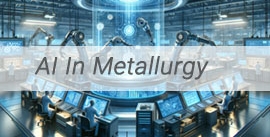 جدید
جدیدتولید باتری از زباله بطری های شیشه ای
محققان از دور ریز بطری های شیشه ای و فرآیند ارزان شیمیایی به منظور ساخت آند های نانوسیلیکونی برای کابرد باتری های یون-لیتیم استفاده کرده اند.باتری ها در محدوده وسایل الکتریکی و پلاگین خودروهای هیبریدی الکتریکی گسترش خواهند یافت و قدرت بیشتری با شارژ کمتر برای وسایل الکترونیکی شخصی مانند تلفن همراه و لپ تاپ ارائه می دهد.
محققان در دانشکده مهندسی برنس ریورساید دانشگاه کالیفرنیا از دوریز بطری های شیشه ای و فرآیند ارزان شیمیایی به منظور ساخت آند های نانوسیلیکونی برای کابرد باتری های یون-لیتیم استفاده کرده اند.
باتری ها در محدوده وسایل الکتریکی و پلاگین خودروهای هیبریدی الکتریکی گسترش خواهند یافت و قدرت بیشتری با شارژ کمتر برای وسایل الکترونیکی شخصی مانند تلفن همراه و لپ تاپ ارائه می دهد.
عنوان “سیلیکون ناشی از بطری های شیشه ای به عنوان مواد آندی برای باتری های یون-لیتیم”یک مقاله توصیفی که این پژوهش در مجله علمی Nature منتشر شد.
Cengiz Ozkanاستاد مهندسی مکانیک و Mihri Ozkan استاد مهندسی برق این پروژه را رهبری کردند.
حتی امروزه با برنامه های بازیافت،بیلیون ها بطری شیشه ای تا ابد،هرساله در محل های دفن زباله می مانند.این باعث شد تا محققان بپرسند آیا سیلیکون دی اکسید در زباله شیشه های نوشیدنی می تواند نانو ذرات سیلیکون با خلوص بالا برای باتری های یون- لیتیم تامین کند؟
آندهای سیلیکونی می تواند تا ۱۰ برابر بیشتر از آندهای گرافیتی معمولی انرژی را ذخیره کنند.اما انبساط و انقباض در حین شارژ و تخلیه آنها را ناپایدار می سازد.
ریزسازی سیلیکون تا مقیاس نانو نشان می دهد که این مشکل را با ترکیب فراوان و شکل نسبتا خالص از سیلیکون دی اکسید و یک واکنش کم هزینه شیمیایی کاهش می دهد.محققان باتری های نیم پیل یون-لیتیم که تقریبا انرژی را چهار برابر بیشتر از آندهای گرافیتی معمولی ذخیره می کنند را ساختند.
برای ساخت آندها،این تیم یک فرآیند سه مرحله ای که شامل خرد کردن و آسیا کردن بطری های شیشه ای تا پودر ریز سفید رنگ و کاهش برای تبدیل سیلیکون دی اکسید به نانو ساختار سیلیکونی و پوشش نانو ذرات سیلیکونی با کربن برای افزایش پایداریشان و خواص ذخیره انرژی استفاده کرد.
همانطور که انتظار میرفت،باتری های پیل سکه ای ساخته شده با استفاده از بطری های شیشه ای بر پایه آندهای سیلیکونی عملکرد نسبتا بهتری از باتری های سنتی در تست های آزمایشگاهی دارد.
شیشه پوشش داده شده با کربن شامل الکترودهای سیلیکونی به خوبی عملکرد الکتروشیمیایی با ظرفیت ۱۴۲۰ mAh/g در نرخ C/2 بعد از ۴۰۰ چرخه را نمایش می دهد.
Changling Li ،یک دانشجوی کارشناسی ارشد در مهندی و علم مواد و نویسنده مقاله ،می گوید: یک بطری شیشه ای به اندازه کافی نانو سیلیکون برای صدها باتری پیل سکه ای یا سه-پنج باتری پیل کیسه ای را تامین می کند.
Li می گوید:”ما با محصولات دور ریز شروع کردیم که برای محل های دفن فرستاده شده بود و باتری هایی ساختیم که انرژی بیشتری را ذخیره می کردند،زودتر شارژ شده و پایداری بیشتری نسبت به باتری های پیل سکه ای تجاری دارند.از این رو ما کاندیداهای بسیار امیدوارکننده ای برای نسل بعدی باتری های یون-لیتیم داریم.”
این تحقیق آخرین در یک سری از پروژه ها به رهبری Mihri و Cengiz Ozkan برای ساخت آندهای باتری یون-لیتیم از مواد سازگار با محیط زیست است.تحقیقات قبلی بر روی گسترش و آزمایش آندهای از قارچ پورتوبلو،ماسه و جدار سیلیسی متمرکز شده بود.
Making batteries from waste glass bottles
Researchers at the University of California, Riverside’s Bourns College of Engineering have used waste glass bottles and a low-cost chemical process to create nanosilicon anodes for high-performance lithium-ion batteries. The batteries will extend the range of electric vehicles and plug-in hybrid electric vehicles, and provide more power with fewer charges to personal electronics like cell phones and laptops.
Titled “Silicon Derived from Glass Bottles as Anode Materials for Lithium Ion Full Cell Batteries,” an article describing the research was published in the Nature journal Scientific Reports. Cengiz Ozkan, professor of mechanical engineering, and Mihri Ozkan, professor of electrical engineering, led the project.
Even with today’s recycling programs, billions of glass bottles end up in landfills every year, prompting the researchers to ask whether silicon dioxide in waste beverage bottles could provide high purity silicon nanoparticles for lithium-ion batteries.
Silicon anodes can store up to 10 times more energy than conventional graphite anodes, but expansion and shrinkage during charge and discharge make them unstable. Downsizing silicon to the nanoscale has been shown to reduce this problem, and by combining an abundant and relatively pure form of silicon dioxide and a low-cost chemical reaction, the researchers created lithium-ion half-cell batteries that store almost four times more energy than conventional graphite anodes.
To create the anodes, the team used a three-step process that involved crushing and grinding the glass bottles into a fine white power, a magnesiothermic reduction to transform the silicon dioxide into nanostructured silicon, and coating the silicon nanoparticles with carbon to improve their stability and energy storage properties.
As expected, coin cell batteries made using the glass bottle-based silicon anodes greatly outperformed traditional batteries in laboratory tests. Carbon-coated glass derived-silicon (gSi@C) electrodes demonstrated excellent electrochemical performance with a capacity of ~1420 mAh/g at C/2 rate after 400 cycles.
Changling Li, a graduate student in materials science and engineering and lead author on the paper, said one glass bottle provides enough nanosilicon for hundreds of coin cell batteries or three-five pouch cell batteries.
“We started with a waste product that was headed for the landfill and created batteries that stored more energy, charged faster, and were more stable than commercial coin cell batteries. Hence, we have very promising candidates for next-generation lithium-ion batteries,” Li said.
This research is the latest in a series of projects led by Mihri and Cengiz Ozkan to create lithium-ion battery anodes from environmentally friendly materials. Previous research has focused on developing and testing anodes from portabella mushrooms, sand, and diatomaceous (fossil-rich) earth.


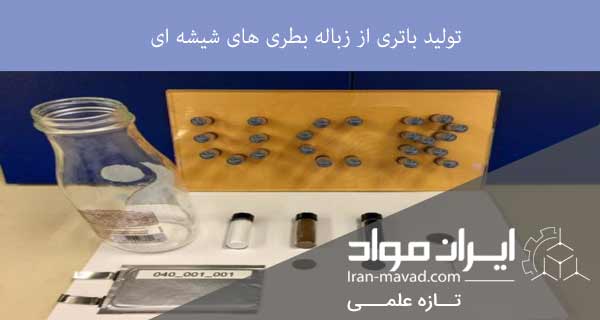

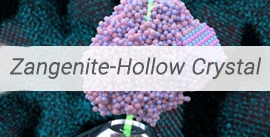


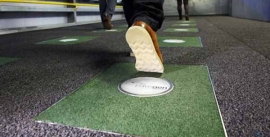
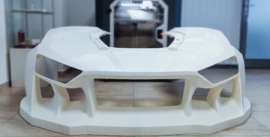

دیدگاه کاربران